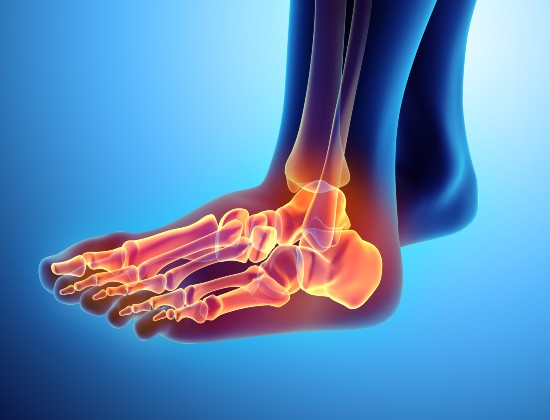Rheumatoid arthritis
Rheumatoid arthritis is a chronic (long term) auto-immune disease (a condition where your immune system attacks healthy cells in your body) that progresses over time. Around half to three-quarters of a million people (with three times as many women as men) in the UK are affected.
What causes it?
It’s not certain what causes rheumatoid arthritis, although it has been linked to smoking, infections and viruses as well as genetic factors. It can, however, affect any joint in the foot and ankle.
What are the symptoms?
- Ankle - Walking and bending the ankle, even on gentle slopes, can be very uncomfortable and stiff. Ankle arthritis and hindfoot arthritis can also develop
- Midfoot - The top of the foot can quite become swollen and painful to walk on. The foot can gradually lose its arch and midfoot arthritis can also develop
- The Hallux (big toe) - The toes can change quite significantly over time. You may notice changes in the big toe including a bunion or big toe arthritis (hallux rigidus)
- Little toes - The little toes can become bent, with toe deformities rubbing on the shoes. Under the balls of the feet it can also become very painful as the bones become prominent. This is called metatarsalgia
Can it become worse?
At first symptoms may be mild, with swelling, but these can become worse as joint surfaces develop arthritis and become stiff and deformed. Even putting the foot into a normal shoe can be difficult due to swelling and pain.
How is it diagnosed?
It is usually diagnosed by monitoring your symptoms, along with a medical examination. Blood tests can also be taken to show whether there is inflammation in the body, but these are not always guaranteed to confirm the diagnosis.
How is it treated?
Treatment can involve a combination of different therapies including:
- Painkillers and anti-inflammatory medication (if advised by your doctor)
- Rigid or semi-rigid braces or supports to stabilise painful joints
- Orthotics or insoles to help stabilise the foot
- Steroid/anaesthetic injections into the joints every six months, under ultrasound control, which give excellent pain relief
- If arthritis develops you may need a specially made rigid shoe
- Foot fusion or toe fusion surgery can help to relieve pain and straighten toes
- Bunion surgery
- Ankle replacement surgery
Important: This information is only a guideline to help you understand your treatment and what to expect. Everyone is different and your rehabilitation may be quicker or slower than other people’s. Please contact us for advice if you’re worried about any aspect of your health or recovery.


